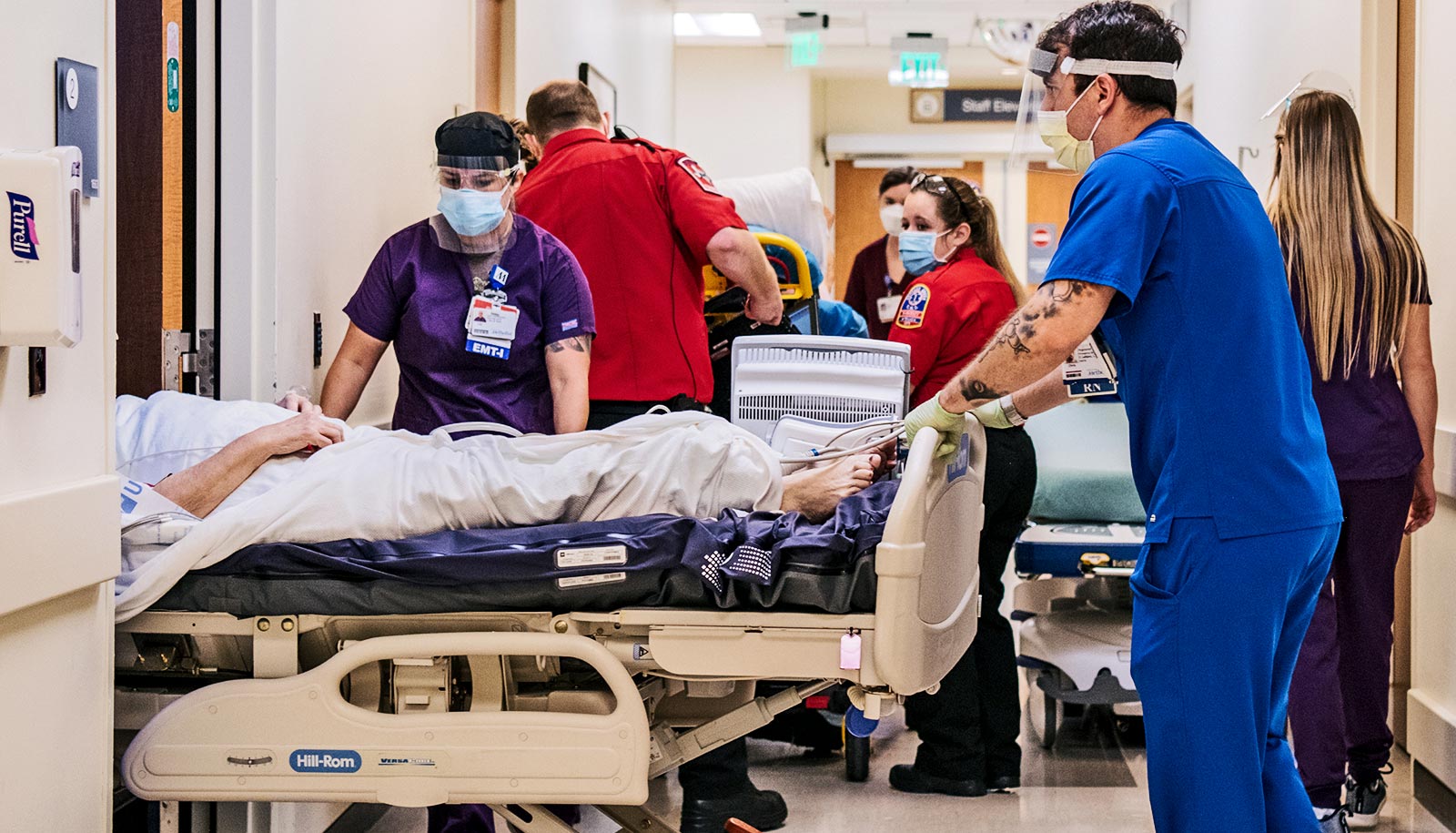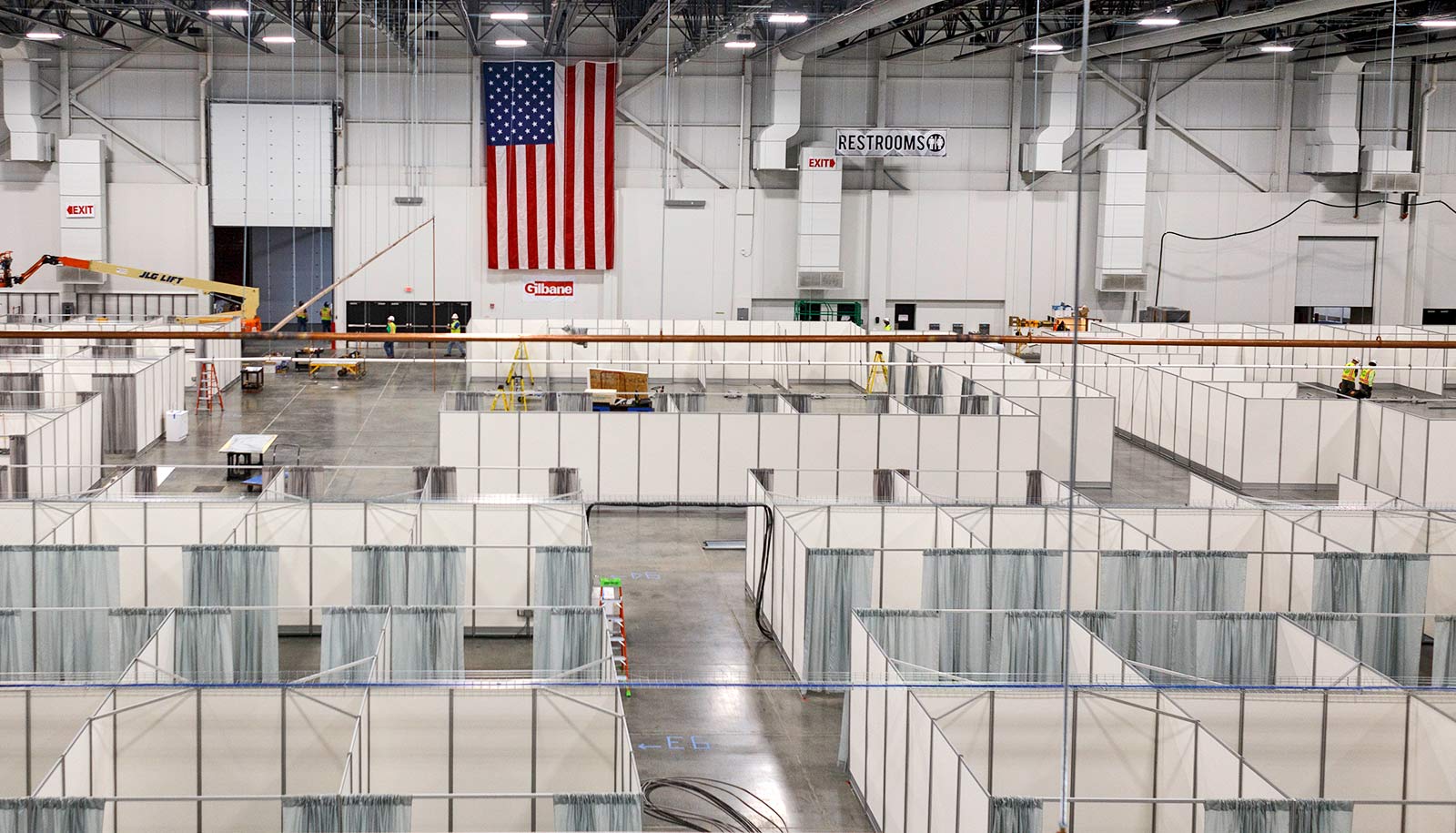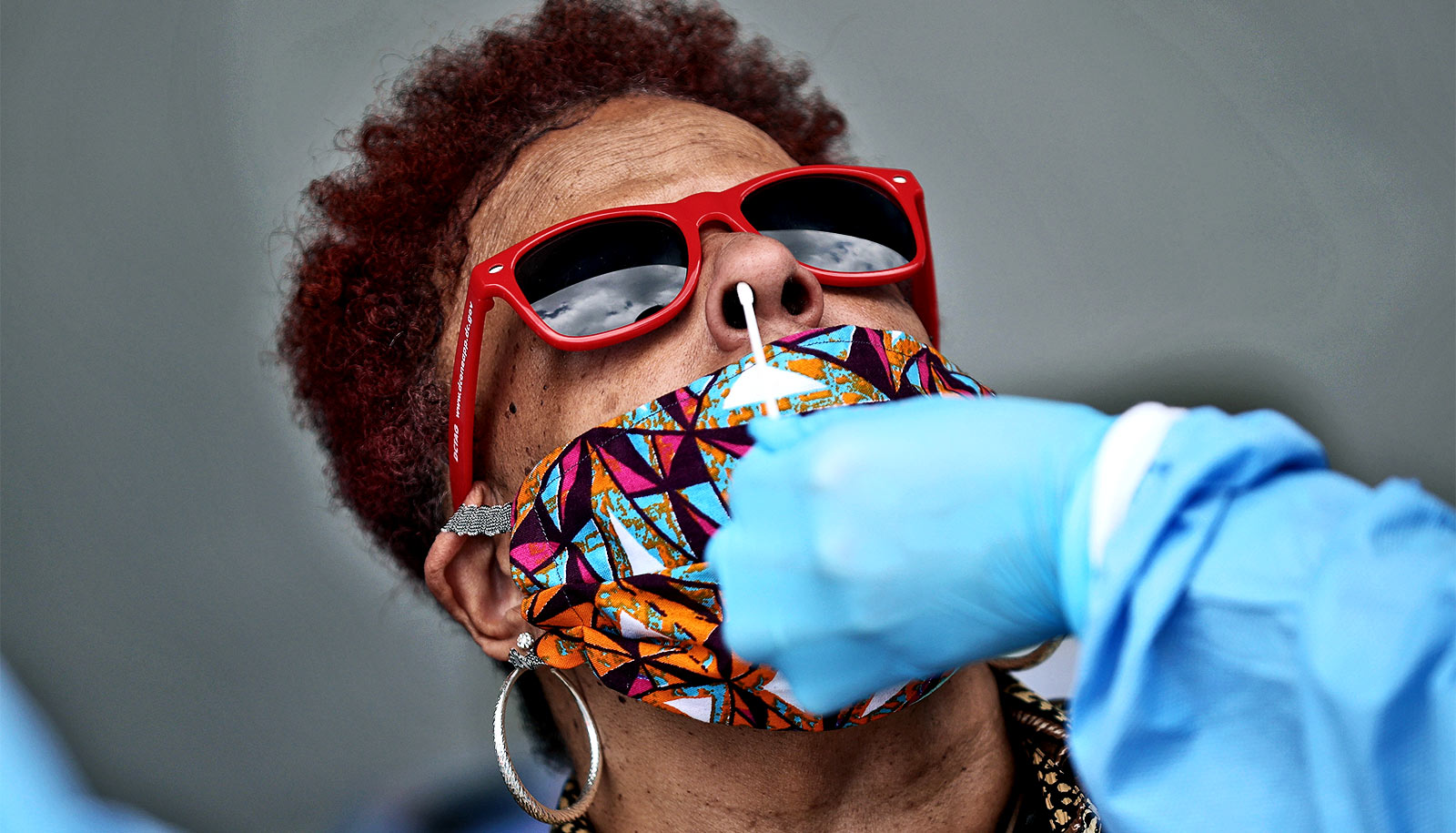
Emergency Room nurses and EMTs tend to patients in hallways at the Houston Methodist The Woodlands Hospital on August 18, 2021 in Houston, Texas. (Credit: Brandon Bell/Getty Images )
AI platform could improve hospital triage in future viral outbreaks
A new AI-powered triage platform can predict patient disease severity and length of hospitalization during a viral outbreak, researchers say.
An innovative patient triage platform powered by artificial intelligence is capable of predicting patient disease severity and length of hospitalization during a viral outbreak, researchers say.
The platform, which leverages machine learning and metabolomics data, is intended to improve patient management and help health care providers allocate resources more efficiently during severe viral outbreaks that can quickly overwhelm local health care systems. Metabolomics is the study of small molecules related to cell metabolism.
“Being able to predict which patients can be sent home and those possibly needing intensive care unit admission is critical for health officials seeking to optimize patient health outcomes and use hospital resources most efficiently during an outbreak,” says Vasilis Vasiliou, a professor of epidemiology at Yale University School of Public Health and senior author of the study published in the journal Human Genomics .
The researchers developed the platform, which integrates routine clinical data, patient comorbidity information, and untargeted plasma metabolomics data to drive its predictions, using COVID-19 as a disease model.
“Our AI-powered patient triage platform is distinct from typical COVID-19 AI prediction models,” says lead author Georgia Charkoftaki, an associate research scientist in the environmental health sciences department. “It serves as the cornerstone for a proactive and methodical approach to addressing upcoming viral outbreaks.”
Using machine learning, the researchers built a model of COVID-19 severity and prediction of hospitalization based on clinical data and metabolic profiles collected from patients hospitalized with the disease.
“The model led us to identify a panel of unique clinical and metabolic biomarkers that were highly indicative of disease progression and allows the prediction of patient management needs very soon after hospitalization,” the researchers write.
For the study, the researchers collected comprehensive data from 111 COVID-19 patients admitted to Yale New Haven Hospital during a two-month period in 2020 and 342 healthy individuals (health care workers) who served as controls. They categorized the patients into different classes based on their treatment needs, ranging from not requiring external oxygen to requiring positive airway pressure or intubation.
The study identified a number of elevated metabolites in plasma that had a distinct correlation with COVID-19 severity . They included allantoin, 5-hydroxy tryptophan, and glucuronic acid.
Notably, patients with elevated blood eosinophil levels were found to have a worse disease prognosis, exposing a potential new biomarker for COVID-19 severity. The researchers also note that patients who required positive airway pressure or intubation exhibited decreased plasma serotonin levels, an unexpected finding that they say warrants further research.
The AI-assisted patient triage platform has three essential components:
- Clinical Decision Tree : This precision medicine tool incorporates key biomarkers for disease prognosis to provide a real-time prediction of disease progression and the potential duration of a patient’s hospital stay. The tested predictive model demonstrated high accuracy in the study.
- Hospitalization Estimation : The platform successfully estimated the length of patient hospitalization within a 5-day margin of error. Respiratory rate (>18 breaths/minute) and minimum blood urea nitrogen (BUN), a byproduct of protein metabolism, were both found to be important factors in extending patient hospitalization.
- Disease Severity Prediction : The platform reliably predicted disease severity and the likelihood of a patient being admitted to an intensive care unit. This helps health care providers identify patients most at risk of developing life-threatening illnesses and allows them to begin treatments quickly to optimize outcomes, the study says.
As part of the study, the researchers developed user-friendly software—the COVID Severity by Metabolomic and Clinical Study (CSMC) software—that integrates machine learning and clinical data to provide pre-hospital patient management and classify patients’ conditions when they arrive at the emergency department.
“Our model platform provides a personalized approach for managing COVID-19 patients, but it also lays the groundwork for future viral outbreaks,” says Vasiliou, professor of epidemiology. “As the world continues to grapple with COVID-19 and we remain vigilant against potential future outbreaks, our AI-powered platform represents a promising step towards a more effective and data-driven public health response .”
Limitations of the study include the fact that all samples were collected between March and May 2020, a time period before the emergence of COVID-19 vaccines and before many treatments for the SARS-CoV-2 virus, such as remdesivir, were available. Such treatments could reduce the changes observed in metabolite biomarkers.
Secondly, the population of healthy controls was mainly white, while the COVID-19 patients comprised a higher proportion of Black individuals. As such, the possibility of race/ethnicity being a factor contributing to differences in subjects cannot be excluded.
Researchers with the Laboratory of Analytical Chemistry at the National and Kapodistrian University of Athens, Greece; Imperial College of London; and the São Carlos Institute of Chemistry at the University of São Palo, Brazil contributed to the study.
Source: Colin Poitras for Yale University
The post AI platform could improve hospital triage in future viral outbreaks appeared first on Futurity .
Share this article:
This article uses material from the Futurity article, and is licenced under a CC BY-SA 4.0 International License. Images, videos and audio are available under their respective licenses.
Related Articles:
Math model: COVID-19 to peak April 20 in United States
April 13, 2020 • futuritySelf-swab COVID tests may be just as accurate
June 17, 2020 • futurityLinks/images:
- https://www.futurity.org/capsule-digestive-system-capscan-2920792-2/
- https://doi.org/10.1186/s40246-023-00521-4
- https://www.futurity.org/sofa-triage-protocol-disadvantages-black-covid-patients-2634292/
- https://www.futurity.org/covid-19-outbreak-obesity-age-2587152/
- http://trams.chem.uoa.gr/csmc/
- https://www.futurity.org/public-health-crises-2802952-2/
- https://ysph.yale.edu/news-article/ai-powered-triage-platform-could-aid-future-viral-outbreak-response/
- https://www.futurity.org/artificial-intelligence-triage-pandemics-2968412-2/
- https://www.futurity.org


